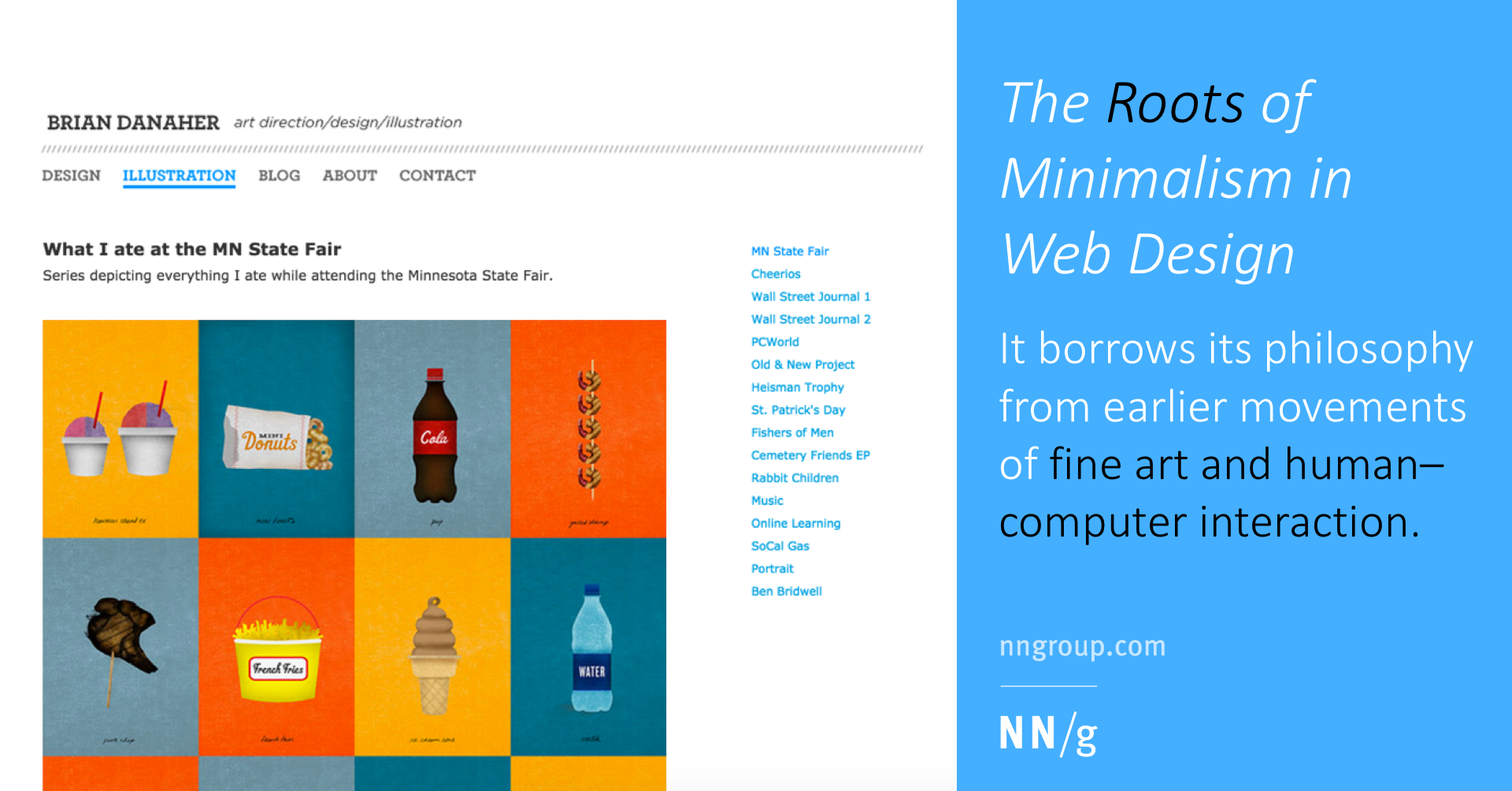Blitz News Digest
Stay updated with the latest trends and insights.
Less is More: Why Minimalist Web Design Wins Every Time
Discover why minimalist web design outshines the rest. Embrace simplicity for stunning results and better user experience!
The Psychology Behind Minimalist Web Design: Why Less is More
In today's fast-paced digital world, minimalist web design has emerged as a powerful aesthetic and functional choice. This design philosophy emphasizes simplicity and functionality, stripping away unnecessary elements to create a clean and focused user experience. The psychology behind this approach stems from our natural tendency to be overwhelmed by excessive information and clutter. By reducing visual noise, minimalist designs enhance user engagement and facilitate easier navigation, allowing visitors to concentrate on the content that matters most.
Moreover, the principle of less is more aligns with cognitive load theory, which suggests that our brains can process only a limited amount of information at one time. By presenting information in a clear and concise manner, minimalist web design helps users absorb, retain, and recall essential details more effectively. As a result, businesses that adopt this approach often see improved conversion rates, as users feel less anxious and more in control when interacting with a straightforward, well-organized website. Ultimately, embracing minimalism not only enhances user experiences but also fosters a sense of calm and clarity in our increasingly chaotic online environment.

Top 5 Benefits of Adopting a Minimalist Approach in Web Design
Adopting a minimalist approach in web design offers numerous advantages that can significantly enhance user experience and overall site performance. One of the key benefits is faster loading times. Minimalist designs often rely on fewer elements and simpler coding, which reduces the amount of data that needs to be loaded. This not only contributes to a better user experience but also positively impacts your site's search engine rankings. According to studies, a 1-second delay in loading time can lead to a significant drop in conversions, making speed a critical factor in web design.
Another notable benefit of a minimalist design is improved usability. By focusing on essential elements and eliminating clutter, users can navigate the website more easily and find the information they need quickly. This streamlined approach reduces cognitive load, allowing visitors to focus on the content without unnecessary distractions. Furthermore, minimalism enhances the visual appeal of a site, creating a more elegant and professional appearance that can increase user trust and engagement.
Is Minimalism the Future of Web Design? Exploring Trends and Best Practices
As the digital landscape continues to evolve, the question arises: Is minimalism the future of web design? This design philosophy, characterized by simplicity and functionality, has gained considerable traction in recent years. Minimalist websites prioritize essential elements, reducing clutter and enhancing user experience. By embracing whitespace, clean lines, and a limited color palette, designers can create visually appealing interfaces that guide users seamlessly through their interactions. With growing mobile usage, the need for responsive design becomes paramount, and minimalism offers an effective solution by maintaining a consistent user experience across various devices.
To fully embrace minimalism in web design, it's crucial to follow certain trends and best practices. First, focus on content hierarchy to help users navigate effortlessly. Utilize typography to establish a clear visual hierarchy, emphasizing key messages and calls to action. Secondly, consider employing micro-interactions to create engaging experiences without overwhelming users. Lastly, always prioritize speed and performance, as a streamlined design often leads to faster load times, which is vital for user retention and SEO. In summary, the future of web design increasingly leans towards minimalism, providing a user-centric approach that enhances functionality while maintaining aesthetic appeal.